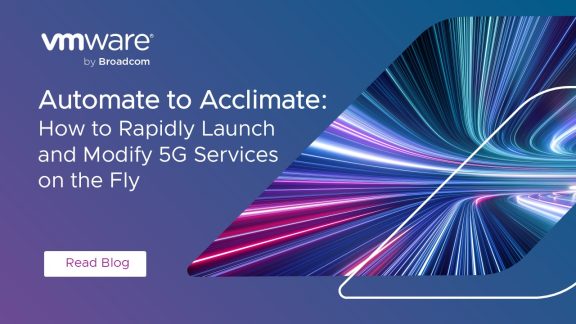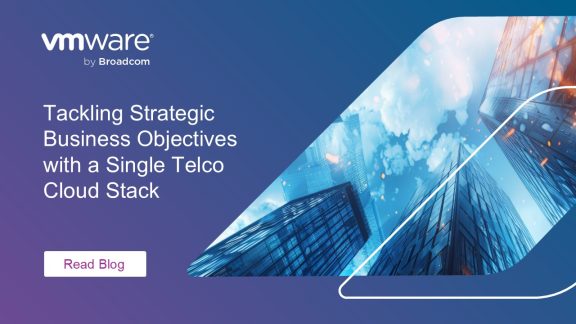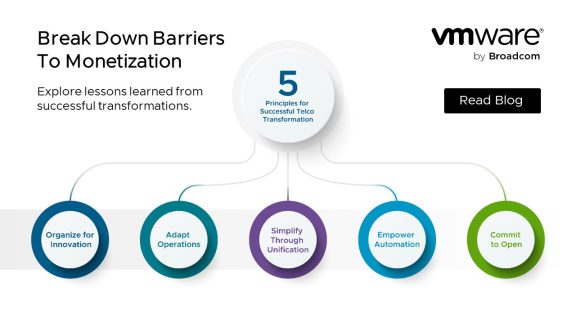We’re a few years into the 5G revolution, and so far, the results are… mixed. On the positive side, 5G now represents the fastest mobile generation rollout in history, according to GSMA Intelligence, with more than 261 operators now offering commercial 5G services. Nevertheless, there’s a growing sense among communication service providers (CSPs) that 5G is not living up to its promise.
Unlike 4G/LTE, 5G was designed to do much more than boost data rates. This new network generation was supposed to bring API-driven service frameworks, infrastructure as code (IaC), continuous integration/continuous delivery (CI/CD), and other modern software and cloud methodologies to CSP networks. In short, 5G was supposed to radically reimagine telecom, creating a more open, agile, and adaptable foundation for the future.
The reality has been decidedly less transformative. For many CSPs, open architectures have proven more challenging to implement with current operating models at hand, especially in radio access networks (RAN). While a few have deployed the wide-open multi-vendor RAN that groups like O-RAN Alliance envisioned, others have abandoned such plans, at least for now. These operators have seemingly put aside their ambitions for open innovation and multi-vendor pricing competition. Instead they’ve asked traditional network equipment providers (NEPs) to please just make it all work, even if that means using more closed, proprietary solutions.
Retreating to single-vendor sourcing does simplify RAN integration, but it carries a heavy cost. By putting off the transition to open architectures and operating models, CSPs are delaying those aspects of 5G that are truly revolutionary. It shouldn’t be surprising then that what’s left—slightly higher data rates, somewhat better coverage, a handful of other early-stage 5G capabilities—has yet to transform telco economics.
As an industry, we all understand the operational changes needed to revolutionize telco networks and revenue models. If we don’t want to be asking the same questions when 6G comes around, we need to start actually implementing them, instead of just kicking the can down the road.
Openness Matters
As the digital ecosystem has grown, spawning one multi-billion-dollar industry after the next, CSPs keep finding themselves on the outside looking in. Every cloud service, for example, depends on telco networks to reach customers. Yet the most profitable digital innovations keep happening “over the top” of those networks, which look largely interchangeable to customers. The result is that despite nonstop demand and ever-growing costs, CSPs find themselves in a race to the bottom, competing mostly on price.
5G was supposed to rewrite that story. By adopting open, standards-based architectures, operators were supposed to gain new tools to add value, drawing on innovations from a global pool of third-party vendors and software developers. The heart of open RAN architectures for example, the RAN intelligent controller (RIC), was designed explicitly for this purpose, inserting new rApps and xApps right at the point where devices connect. So far though, very few CSPs have come close to enabling this vision.
What’s holding things up? Among other challenges, the phased approach to 5G—initially adding new radios to 4G cores and leaving more significant network and operational changes for later—has left telcos in a Catch-22. CSP leaders face pressure to monetize billion-dollar investments in 5G spectrum and radio technologies before investing in further organizational change. But the most profitable 5G use cases can’t work until those changes are in place.
Take network slicing. One path to 5G monetization is to offer custom network slices tuned for different enterprise applications, and deliver them with guaranteed latency and performance under service-level agreements (SLAs). Indeed, STL Partners found that enterprises will pay a premium for such services. To actually deliver them, however, CSPs need end-to-end visibility and control over network slices from core to RAN to customer. That doesn’t exist today. Instead, legacy toolsets fragment operations into domain- and vendor-specific silos, with no holistic source of network data or abstraction.
These silos are the biggest reason why CSP network operations are so slow, complicated, and expensive. As long as they remain, CSPs can’t offer on-demand slices or services, much less implement the closed-loop automation needed to assure more stringent SLAs. Yet by delaying adoption of open standards-based architectures, CSPs have effectively reinforced those silos instead of breaking through them.
Retreating to a Single-Vendor RAN
It’s hard to fault CSPs for struggling with standards-based architectures like open RAN or for asking vendors for help. But simply outsourcing 5G RAN to a NEP is often shortsighted. Single-vendor solutions bring their own problems:
- They’re not really open. RAN vendors claim their products are standards-aligned and can support third-party components. The problem is that they have little incentive to make it easy to use software and NFs from competitors. So, even when NEP solutions align with standards, they’re never truly open.
- They create new silos: In theory, when the network is composed of standards-based software functions running in cloud-native architectures, you can use the same tools and processes everywhere. In practice, NEP solutions require specialized processes and proprietary tools, creating more vertical silos.
- They limit access to network data: When CSPs outsource the RAN, the NEP effectively owns all telemetry data in that infrastructure. Even when CSPs pay licensing fees, they still can access only a subset, and not at a level granular enough to support AI model-training or automation. How can you innovate when the networks closest to customers are a black box that someone else controls? How can you build closed-loop automation or monetize valuable network data when you can’t even access your own data sets?
NEPs will always offer important value in helping CSPs navigate complex RF networking challenges. But CSPs need to look out for their own interests too. That means balancing RAN vendors with other ecosystem partners, and making sure that you retain control of your vision for the future.
Making Open Work
You may not be ready to fully embrace open standards-based architectures and operations. But if you want to break free from the constraints that keep pushing telcos to the back of the pack in the digital ecosystem, it’s time to get started. As you progress through this network and operational transition, keep the following guidelines in mind:
- Transformation is easier with a horizontal telco cloud platform. CSPs adopting open horizontal cloud platforms report that, while they can be a big lift initially, they yield significant benefits once deployed. Platforms like VMware Telco Cloud, for example, offer broad partner ecosystems, where much of the work testing, validating, and integrating multi-vendor components is already taken care of. This allows CSPs to use best-of-breed NFs from multiple vendors, while operating everything using the same tools and processes.
- Choose telco-grade products. Practically all cloud-native environments use some version of open-source Kubernetes container-as-a-service (CaaS) orchestration. However, as those enticed by the low upfront cost of open-source software have discovered, Kubernetes is a not a ready-to-deploy telco product. To the contrary, native Kubernetes is enterprise software. It does not come pretested or validated for telco-grade performance and reliability, nor for manageability at the scale of telco networks. Unless you have CaaS experts on staff, you should expect to need extensive custom integration services and tooling before you have a working solution, and those costs can be significant.
- Keep it simple. Along the same lines, many operators using open-source software find that it adds complexity and costs they hadn’t anticipated. Remember, “open” and “open-source” mean very different things. A vendor can provide an open solution that uses standards and APIs to interoperate with third-party software. Open-source, on the other hand, means software developed under an open-source licensing model, where anyone can use and contribute to the codebase, and updates and support get complicated. Here again, consolidating on an open horizontal telco cloud makes things easier. CSPs taking this route find many of these considerations—validated performance, telco-grade resiliency, automated deployment and operations at scale—already baked into the solution.
Making the transition to open standards-based architectures and operations will likely involve some growing pains, but it’s a step that CSPs have no choice but to take. It’s the only way to address our industry’s longstanding economic challenges and put telcos on a stronger footing for the future.
Want to talk to our experts about paths to simplify your journey to open? Request a discussion here.






